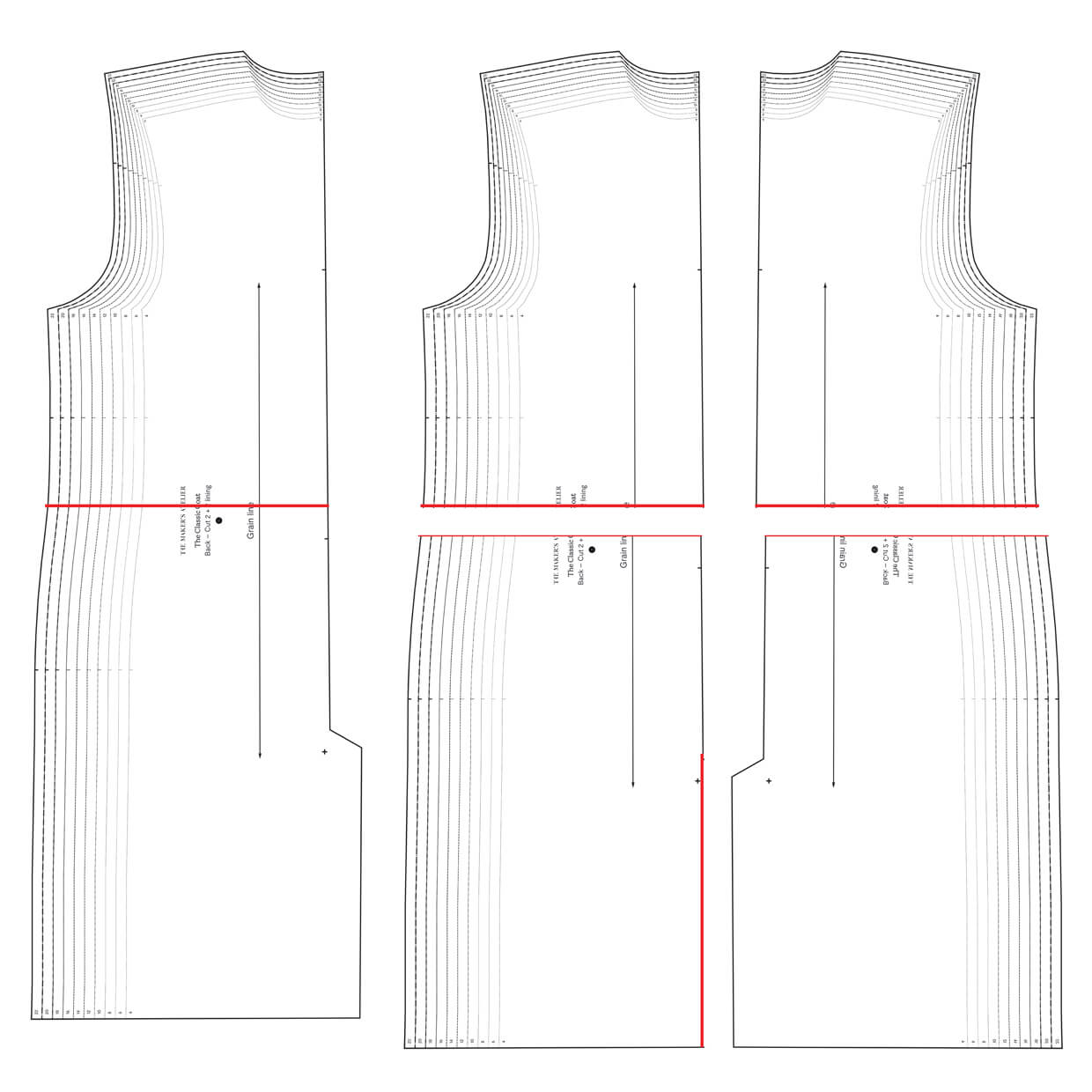1st February 2023
A Suede Coat

This pared back version of The Classic Coat is the perfect project if you like working in leather or suede. The classic styling means years of wear and, like blue jeans, leather and suede ages well.
When working with leather or suede, on a domestic sewing machine, it is important to simplify the design for a successful outcome. This coat is raw-edged with no facings and integrated pockets have been added, instead of the welt pockets from the original pattern. The leather or suede needs to be lightweight: Napa is ideal however the skins are small and this needs to be taken into consideration with the garment pattern pieces.

First I took the front and back pattern pieces and dissected them around the middle: drawing a line 23cm from the underarm.

For the integrated pockets on the front I separated the two halves and attached 18x20cm rectangles as shown; these will form the pocket bags.

For the back I removed the vent extension from one side as when stitched together the return isn’t needed, only the under vent. Apart from the front and back pieces I also cut the sleeves and only the top collar piece.
When assembling the coat, use a leather needle and lengthen the machine stitch; too many needle perforations can result in the leather tearing. To stop the leather sticking to your machine try a roller foot or Teflon foot. To hold the garment pieces together use wonder clips instead of pins.

The pockets have worked particularly well.

This is the back vent: showing the vent extension on the right hand side only.

For the fastenings I wanted to keep a clean front so I chose large snap fasteners. I attached the fasteners to a strip of suede that I then glued to the underside of the right hand front, when worn. In this way the stitching does not show when the coat is worn.

Hand stitching through leather is tricky even with a leather needle. I decided to punch tiny holes with a Japanese screw punch using the 1.2mm bit, to assist this.

I’m really happy with the finished coat, its sophisticated pared-back style will mean plenty of wear in the transitional spring and autumn months.
Take the pattern pieces with you when shopping for suede or leather as the skins vary and it is impossible to predict how much will be needed.